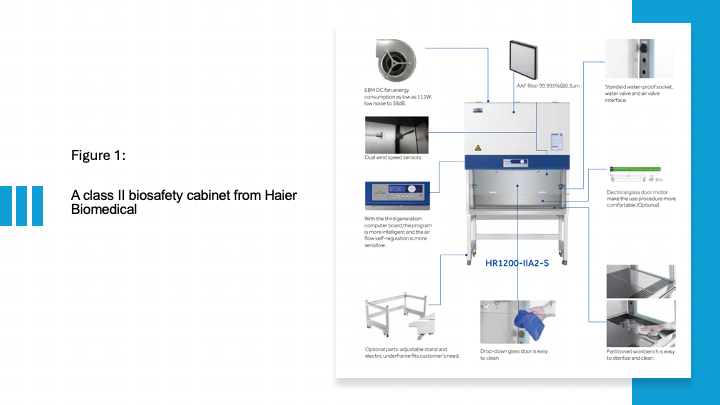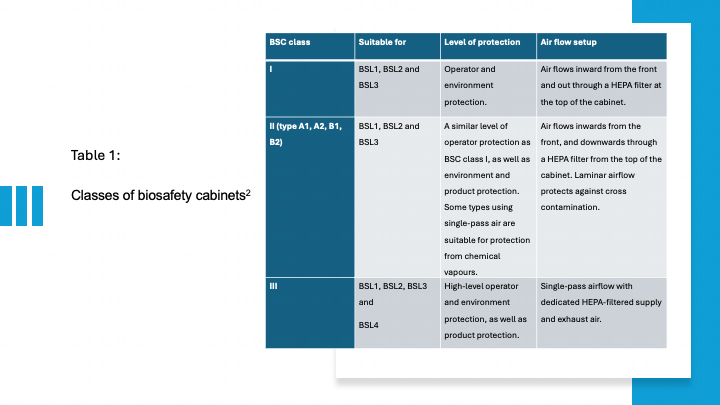BSC Classification and Selection
A biosafety cabinet (BSC) serves as a vital piece of equipment in biology laboratories, providing a controlled environment for the safe handling of hazardous or infectious materials. BSCs operate on the principles of containment, airflow and filtration to protect the operators and the surrounding environment from potential biohazards. High class BSCs can also help to maintain the quality of materials by filtering both the inflow and exhaust air, aiding aseptic processes.
The design and functionality of BSCs can vary from simple to custom-built designs, with different classes, sizes and features tailored to specific applications. Selecting the most appropriate BSC for your research, and adopting the best practices for its use, are critical to ensure safe and effective.
Key considerations when choosing a BSC
There is a lot to consider when making purchasing decisions for BSCs, from selecting the correct class and design of cabinet for your application to finding a servicing company that works for you. Several of these specifications may be dependent on personal preference, such as aesthetics, but most of them will impact the safety and efficacy of working procedures, and may even be governed by regulations, so should be evaluated thoroughly with a risk assessment. In this section, we will run through key considerations for choosing a BSC.

Class of BSC
There are three classes of BSCs that differ in design, airflow and level of safety. The class that you choose will depend on the hazard posed by the biomaterials being used, and your intended objectives.1 The World Health Organization characterizes agents into four different risk groups or biosafety levels (BSLs):
1.Low or no risk: a microorganism that is unlikely to cause human or animal disease.
2.Moderate individual and low community risk: a pathogen that can cause human or animal disease, but is unlikely to be a serious hazard. Effective treatment and preventative measures are available.
3.High individual and low community risk: pathogen that usually causes serious human or animal disease, but does not ordinarily spread from one infected individual to another. Effective treatment and preventive measures are available.
4.High individual and community risk: a pathogen that usually causes serious human or animal disease, and that can be readily transmitted from one individual to another. Effective treatment and preventive measures are not usually available.

The BSL categorization of your microorganism will determine the level of protection that is required for the researcher, environment, and materials, guiding your selection of BSC class (Table 1). *HEPA filter = high efficiency particulate absorbing filter.

Figure 2. The direction of airflow in BSCs. (A) Class I – air flows inwards from the front and out through HEPA filters at the top. (B) Class II – Air flows inwards from the front and downwards through a HEPA filter, creating a laminar flow. (C) Air flows downward through HEPA filters and is ducted out.














.png)


























